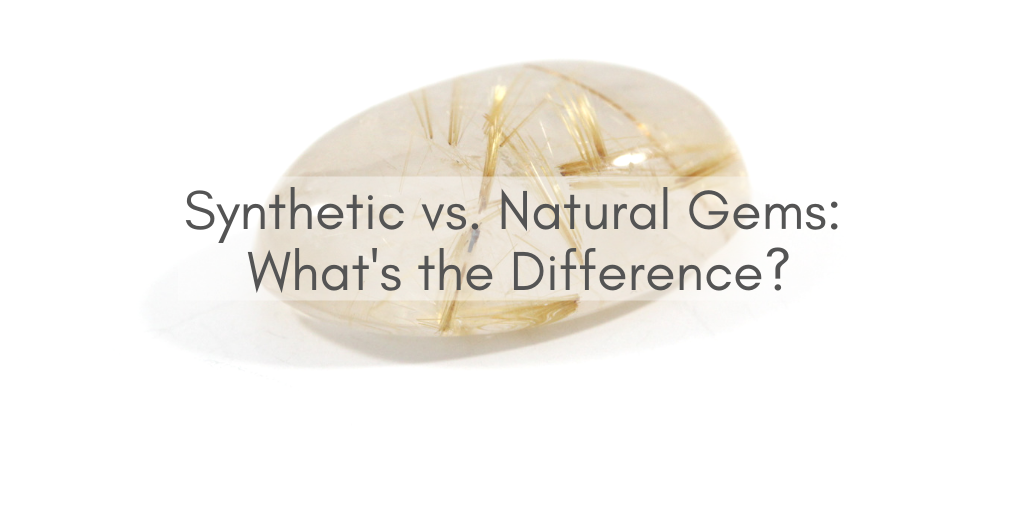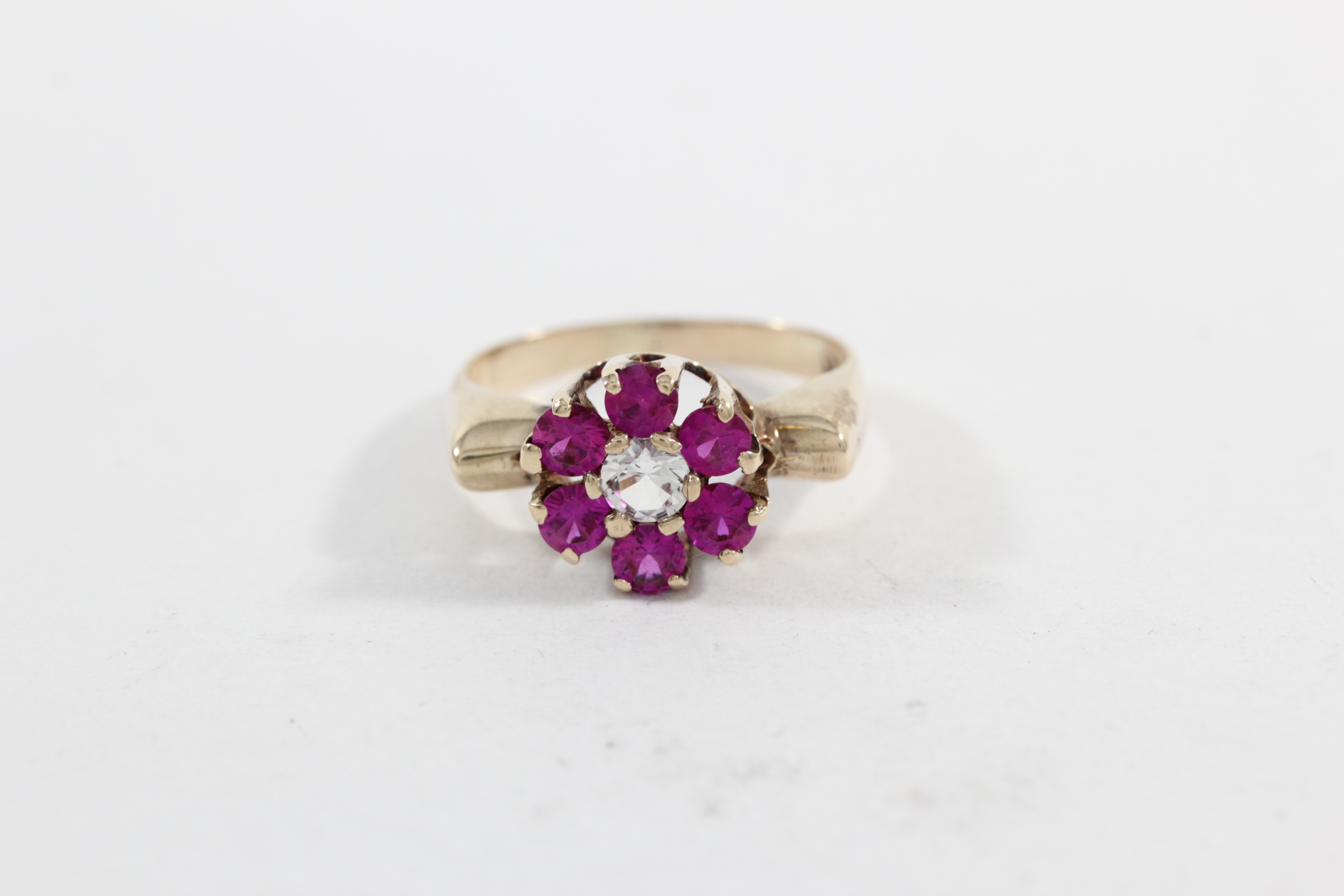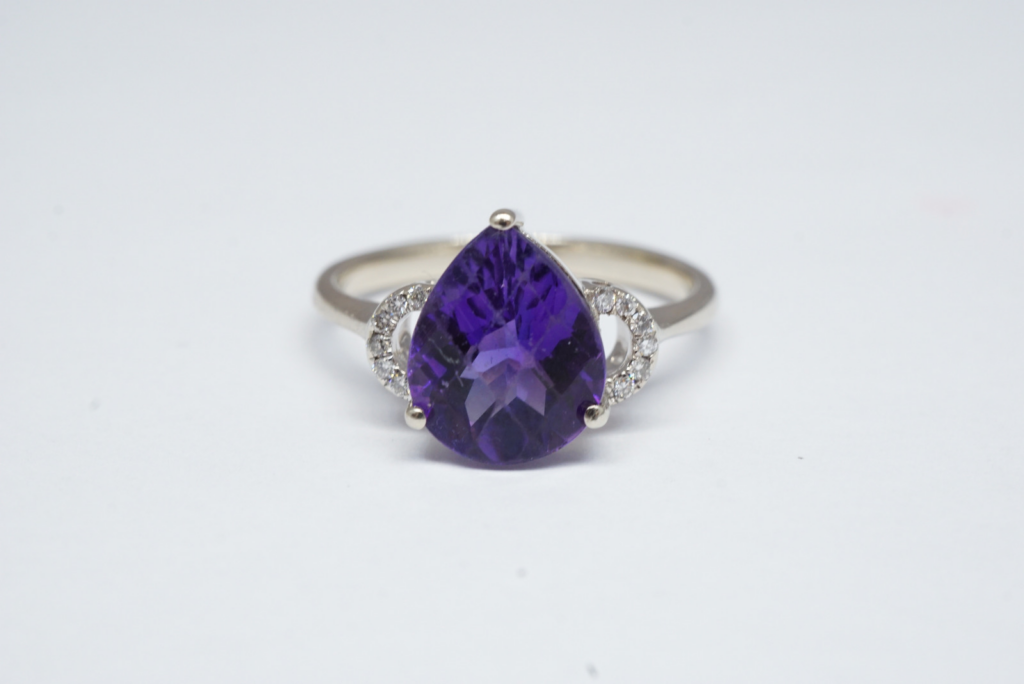Synthetic vs. Natural Gems: What’s the Difference?
Written by Annabelle
May 31, 2019

Manmade gems or natural gems? This question has been bouncing around the jewelry industry for quite some time; after all, synthetic gems have a dubious reputation due to their origins. But a lot of people actually don't understand what synthetic stones really are; read on to learn more about them and how they actually compare to natural gems.
What Are Synthetic Gemstones?
When people hear the words “synthetic” and “manmade,” the automatic assumption is that the stone is “fake.” In other words, many people believe that synthetic gemstones are made from glass or plastic. This is the most common and detrimental misconception people have regarding synthetic gemstones.

This antique ring is set with a fresh synthetic sapphire.
Synthetic gemstones, while created in a lab, have exactly the same chemical composition as the natural one. For instance, a diamond is made out of carbon. The only difference between a natural diamond and a lab-created diamond is how that carbon was compressed into a gem, either by nature or by technology.
Given that synthetic gemstones are exactly the same as natural stones in terms of chemical composition, why aren't they more popular? Well, there's still quite a lot of negative perceptions regarding synthetics; one being that they're artificial. Jewelry lovers enjoy the romantic connotations of a gem being uniquely formed by nature, with its own inclusions and flaws that set it apart from another gem. A man-made gem simply doesn't have the same “feel” as a natural gem; similar to buying mass-manufactured clothing instead of a bespoke suit. However, synthetics actually have their own benefits- and with a growing group of customers who have particular buying habits and values, they're becoming increasingly popular.
Synthetic Gemstones: The Pros
- Excellent Quality: Synthetic gemstones, because of how they're created, are manufactured to be near flawless in terms of color and clarity. It is far easier to procure a synthetic sapphire that is royal blue and loupe-clean, for example, than waiting around on the market to buy a natural sapphire with the same characteristics.

These synthetic rubies have a bright and vivid color that would be expensive to purchase if natural.
- Great Affordability: Buying a natural and large high-quality gemstone is extremely expensive in comparison to a synthetic gemstone. Because of how natural gemstones are produced and discovered, the chances of finding a stone with a certain set of characteristics (carat weight, color, clarity) is difficult, which significantly increases the price. On the other hand, synthetic gemstones can be easily made to those particular specifications, and are plentiful in supply.
- Environmentally Sustainable: The process of mining natural gemstones and diamonds is known to be environmentally harmful, by causing soil erosion, deforestation, and water pollution. While regulations have been established to reduce the impact of mining on the environment, it is difficult to regulate across the board, and suppliers continue to use unethical methods to obtain their stones. On the other hand, synthetic stones can be created with a few chemicals and machines in a controlled laboratory. The technological requirements such as equipment and experience needed to make synthetic stones limits the production to a number of people.
- Ethically Responsible: Diamonds are notorious for their unsavory reputation; as many are mined in war-torn countries in Africa, they have been used to fund massive conflicts such as the Sierra Leone civil war. While the Kimberly Process was created to trace the source of stones and prevent this illegal funding from happening, many customers prefer to avoid feeding an industry known for its lack of transparency. Synthetic diamonds are a great way to enjoy the brilliance and beauty of your jewelry without questioning its origins, since you know exactly where it's created.
Synthetic Gemstones: The Cons
- Low Resale Value: While synthetic gems are wonderfully cheap, this also lowers the resale value if you're looking to sell off some of these pieces later on. Compared to natural stones, they're simply not as valuable because they're readily in supply.
- Overly Flawless Appearance: Some people prefer the look of natural gems because of the imperfections. Synthetic gems can be created to imitate that look, but mass-market synthetic gemstones tend to veer towards the clear, perfect aesthetic. This puts off some buyers who enjoy seeing inclusions in their jewels.
So, what do you think? Are you team natural, or team synthetic? Let us know in the comments below!



For jewelry purposes synthetics all the way. They are superior in quality, can be made to mimic natural ones in terms of inclusions if one wants and you can get them in big sizes if you want. And they not cost thousands of money. For true mineral collector – rough, untreated natural crystals are only option.